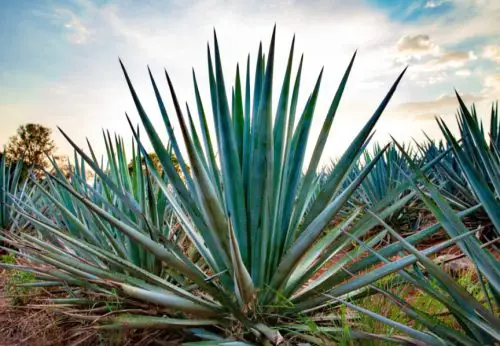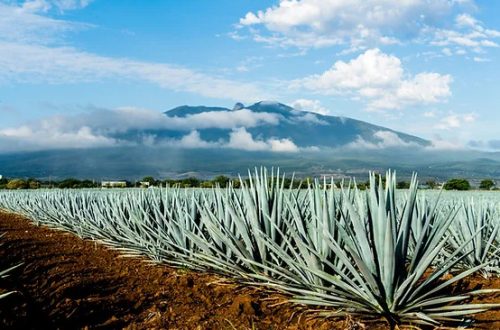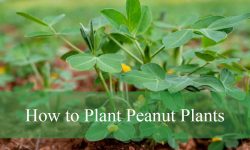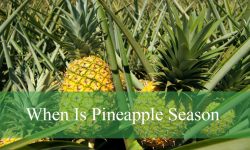Embarking on the journey of cultivating Blue Agave plants offers a delightful adventure in horticulture. These remarkable succulents, known for their striking blue-green leaves and resilience, make a wonderful addition to any garden or living space.
In this comprehensive guide, we will delve into the essential care and growing practices that ensure the longevity and vibrancy of Blue Agave plants. From sunlight requirements to watering techniques, join us on a exploration of the key elements that contribute to the thriving success of these distinctive plants.
About Blue Agave Plants

Mexico is the native place of the succulent known as Agave tequilana, also called Blue Agave. Thick, meaty leaves with sharp points and serrated edges, characteristic of this plant with long, blue-green leaves grouped in a rosette pattern around a base like a trunk. When fully grown, Blue Agaves can reach a height of more than two meters in six to ten years.
When the plant reaches maturity, it may bloom during its peak growing season, which is usually late spring to early summer, in a towering spike of flowers. This spike produces clusters of tubular flowers that are greenish-yellow in color and smell deliciously like honey. Interestingly, the life cycle of Agave tequilana is monocarpic, meaning that the main plant perishes after flowering.
These plants are highly valued in their native Mexico where they are used to make pulque, mezcal, and tequila. Blue agave is used medicinally by indigenous people in Mexico for millennia, in addition to their use in the creation of alcoholic beverages. Reported to have anti-inflammatory, antifungal, and antibacterial qualities, it has been used to treat a number of medical conditions, such as burns, wounds, and digestive disorders.
Blue Agave Plants Care Guide

Lighting requirements
Plants that are exposed to either full sun or moderate shade do well. They are resilient to high temperatures and intense sunshine since they usually spend the majority of the day in broad sunlight in their natural habitat.
Blue agave plants should be placed in a spot that gets at least 6 to 8 hours of direct sunlight each day. This means that indoors, it should be placed optimally close to a bright window that faces the sun. Although they can withstand moderate shade, too much shade might cause the plant to grow elongated and weak.
It’s important to gradually adapt your plant to direct sunlight if you decide to move it from a shaded area to one with more sun exposure. Plants may suffer from leaf burn and other damage if they are suddenly exposed to strong sunlight. As a result, gradually increase the plant’s exposure to sunshine over a few weeks.
Avoid planting the plant in places where there are frequent drafts or significant temperature swings in order to guarantee optimum growth.
Watering
The drought tolerance of agave tequilana is remarkable; it only has to be watered once every two to four weeks, depending on the season, environment, and humidity levels. Humid regions may allow for less frequent watering, whereas arid conditions may call for more frequent watering.
The only time the soil should be watered is when it is completely dry. Make sure you water the soil thoroughly enough to reach the plant’s deep roots when irrigating, leaving it just slightly damp but not soggy. To avoid waterlogging, fungal infections, or crown rot, direct water at the base of the plant without coming into contact with the leaves. It is best to water in the morning so that the plant can dry out before dusk.
Never leave a pot of potted plants submerged in standing water, and make sure to frequently check the drainage holes to avoid clogs. Avoid overwatering, as this might result in pest problems and root rot. Water Blue Agave every two weeks throughout the growing season; in the dormant season, water only once a month. An additional glass of water after blossoming in the early summer might be helpful.
Although Blue Agave plants may survive for long periods without water, they require more frequent watering when they show symptoms of drought, such as curling, yellowing, or browning leaves. Firm, stiff leaves that show no symptoms of withering or yellowing are indicative of healthy plants.
Temperature
Because of its evolutionary adaptations, blue agave grows well in the hot, dry climate of its native Mexico. It thrives in warm climates and shows resistance when exposed to high daily temperatures.
Blue agave grows best at temperatures between 60 and 90 degrees Fahrenheit (15 and 32 degrees Celsius). Temperatures in these plants’ natural habitat can reach as high as 100°F (38°C) during the day and as low as 40°F (4°C) at night.
Yet, extremely high or low temperatures, particularly when they occur suddenly or persist, can harm blue agave plants. Lower than 50°F (10°C) can cause dormancy, while higher than 100°F (38°C) temperatures can cause scorched leaves and dehydration of the plant.
Soil
The Blue Agave, or Agave tequilana, prefers sandy or rocky soil that drains well. Because of the efficient drainage of excess water, this kind of soil keeps the roots from getting soggy, which can cause root rot.
Sandier soil combined with perlite, gravel, or small rocks is a common soil combination for Blue Agave plants. This mixture aids in anchoring the plant in its location and offers appropriate drainage.
Fertilizing
The blue agave plant doesn’t have particularly high fertilizer requirements.Being a native of the desert, the plant is accustomed to thriving in sandy, well-drained soils.
For this reason, it’s crucial to fertilize the blue agave with a gentle touch. A plant may suffer from much fertilizer.Before the plant grows, in the spring, is when fertilization is most effective. Using diluted liquid fertilizer, it’s a good idea to apply fertilizer every six weeks. On the other hand, frequent fertilization could be necessary if you are in a region with a lot of rainfall.
Pruning
Both maintenance pruning and shape pruning are the two major methods of pruning blue agaves. Regularly removing damaged or dead leaves and any baby agaves (offshoots) that may grow at the base of the plant is the goal of the former approach. The general well-being and vitality of the blue agave are guaranteed by this kind of trimming.
On the opposite side, shaping pruning is used to control the plant’s shape and dimensions. Should you want to regulate the growth pattern, this procedure becomes essential; nevertheless, if you are content with the organic form your plant is taking on, it might not be required. You may personalize the blue agave’s look to suit your tastes with shaping trimming.
Pests & Diseases
Similar to other plants, agave tequilana is vulnerable to several pests and diseases. The Agave Weevil (Scyphophorus acupunctatus), which burrows into the center of plants and may cause Crown Rot and plant mortality, and the Agave Snout Weevil (Scyphophorus cavanillesi), another insect that causes Crown Rot, are common pests. Aphids are tiny insects that consume sap from plants and can weaken and stunt their growth.
Crown Rot symptoms include spots or lesions on leaves, especially in the middle of the plant, therefore it’s important to be on the lookout for these. Using an insecticide is part of the treatment, and direct watering of the leaves should be avoided. In order to lower the risk of crown rot, watering should be directed onto the soil rather than collecting in the crown.
Black Soft Rot, a bacterial disease that causes the tissue of agave tequilana to become soft and discolored black, is one of the diseases that can harm the plant. Drying the soil in between waterings is necessary to prevent root rot, which is caused by overwatering and water collecting around the roots. Leaf Spot is a fungal disease that causes spots on leaves. One recommended fungicide that may be found at local garden centers can treat the problem.
Propagation
Agaves can be propagated through offsets, stem cuttings, or seeds, with offsetting generally considered the simplest and most reliable method. Offsets, also known as pups, are essentially small, complete daughter plants naturally produced on the mother plant. These clones are identifiable by their nearly autonomous nature.
To propagate through offsets, carefully observe the development of offsets on the mother plant and wait until they have established a robust root system. Gently detach the offset from the mother plant, placing it in a pot with well-draining soil, watering it thoroughly, and positioning it in a sunny location. It may take several weeks for the offset to acclimate to its new surroundings and initiate growth.
Alternatively, propagation through stem cuttings involves cutting a healthy shoot, approximately 6 inches (15 cm) long, from the mother plant. This cutting should include several leaves. After removing lower leaves, dip the cutting’s end in rooting hormone and plant it in a pot filled with well-drained potting mix, ensuring adequate watering. Place the pot in a sunny spot, and within a few weeks, the cutting should develop roots.
Propagating agaves through these methods can be a fulfilling endeavor, offering the opportunity to create new plants for your garden.
Conclusion
Blue Agave plants stand out as beautiful additions to both indoor spaces and gardens, demanding minimal upkeep. Armed with essential knowledge, maintaining the vitality and health of these plants becomes a straightforward endeavor. The key lies in providing ample sunlight, practicing conservative watering habits, and ensuring protection from harsh cold conditions. With these fundamental care practices, your Blue Agave is poised to thrive and grace your surroundings with its enduring beauty for years to come.
People Who Read This Also Read:






